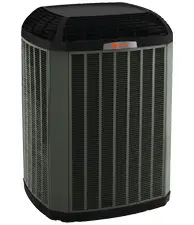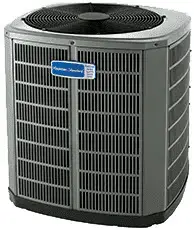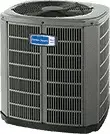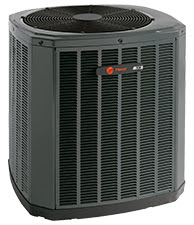
American Standard vs Trane
This is a comparative review of American Standard vs Trane air conditioners in 2021.
This is a comparative review of American Standard vs Trane air conditioners in 2021.
Table of Contents
I’ve been working in the air conditioning industry for many years and like to keep up with the trends. Trane and American Standard are both great brands, but which is the right choice for you?
I’ve done a whole lot of research to see if anything about their new AC equipment has changed recently. The answer is, not recently. But the information I am going to review and share will help you make the best choice for your home.
I am also going to look at cost factors and see if there is any way you can save on one or the other brand.
What American Standard and Trane Have in Common
American Standard and Trane have a lot in common. In fact, seven of the air conditioning models that Trane makes are exactly the same as those made by its sister company. And they are all made in the same factory.
The devil is in the details!
They share the same features, although the casing and final unit colors are different. It stands to reason that the nameplates are also different.
But my review shows there is one different thing. Trane makes two models that American Standard doesn’t make.
Both these brands have a lot in common with other top products, like Carrier. But you will find that they are similar, rather than the same.
Trane vs American Standard Brands
You may not be a history buff. But, if you have a window on the business relationship of Trane and American Standard it will help you see how close their operations are. It will also help you choose between the two.
Founded in 1885, American Standard Companies bought Trane a century later, in 1984. The rest is history!
A lot happened 14 years ago, in 2007. The American Standard Companies was divided into three divisions. These included kitchens and bathrooms and HVAC (heating, ventilation, and air conditioning.)
It named its HVAC operation Trane, which means that American Standard bought Trane, and then became Trane!
The same year, Ingersoll Rand bought the Trane company, along with both of these brands.
In 2019, Ingersoll Rand merged its industrial business with Gardner Denver. In 2020, its HVAC assets, including air conditioners and heat pumps, became Trane Technologies.
But Ingersoll Rand is still the parent company. And today, both Trane and American Standard manufacture their air conditioners in the same factory. The same applies to all the HVAC system equipment each company produces.
This means that each brand is essentially created equal!


Ingersoll Rand owns Trane and American Standard
American Standard and Trane Efficiency
Both companies rank their air conditioners by efficiency, the quietest operation, and value-for-money that should help you save.
Trane’s most efficient air conditioner is the XV201 TruComfort variable speed. It has a seasonal energy efficiency ratio (SEER) of up to 22 and 750 stages of comfort for ultimate climate control.
It automatically adjusts its temperature and maintains speeds to avoid temperature swings. It is also very quiet and boasts the lowest cost per minute.

XV20iTruComfort Variable-speed with a DuraTuff top
American Standard’s most efficient air conditioner is the AccuComfort variable-speed Platinum 20 air conditioner. It also has a seasonal energy efficiency ratio (SEER) of up to 22.
This system also automatically adjusts to the most efficient speed to maintain comfort levels. It is exceptionally quiet and works smarter to lower operating costs.

AccuComfort variable-speed Platinum 20
Essentially, they are both the same!
Trane and American Standard Features
American Standard vs Trane residential air conditioners are amongst the best in the HVAC industry. Standard features relate to quality and performance, which this review highlights.
But American Standard, Trane, and several other brands, including Carrier, have three different series based on cooling stages. They both have a high-end variable speed range, which is the most efficient. And they both have a series of two-stage and single-stage air conditioner models.
American Standard’s three tiers are AccuComfort Platinum, Gold, and Silver. Trane’s three tiers are XV TruComfort, XL, and XR.
AccuComfort and TruComfort are the premium brand of each company’s central air conditioner ranges. All units in this category are consistently recognized as the Most Efficient of ENERGY STAR, including for the year 2021.
Like Carrier, both companies produce air conditioners that exceed SEER standards. This guarantees higher quality air and more comfort. They also offer greater energy savings.
As well as efficiency, both brands rate each model air conditioner for quietness. We have shared the sound rating of each in the table below.
Trane’s quietest one is the Trucomfort XV18. American Standard’s is the AccuComfort 18. You will see that both units are identical. There is simply no difference between the equipment types.
American Standard and Trane Coils
Most American Standard air conditioner models feature 100% aluminum Spine Fin coils. But the Silver 16 Side Discharge has a plate-fin coil.
Not surprisingly the American Standard vs the Trane air conditioner coils are no different from each other. The reason for using foil-backed insulation is so that we can wipe them down and clean them easily.
Like the American Standard AC coils, Trane coils are also used for heat pump equipment and systems. They are also tested for performance and quality. This ensures that all HVAC systems installed are tops for each company.
Trane and American Standard Compressors
The Platinum series American Standard air conditioner compressors have 700 stages and variable speeds. The Gold Series machines are two-stage. The Silver Series air conditioners are single-stage machines.
Again, when you compare an American Standard vs Trane air conditioner compressor, you will find that there isn’t a difference.
American Standard and Trane Warranties
Both Trane and American Standard air conditioner models carry a 10-year limited warranty on the outdoor coil. There is also a 10-year warranty on all other internal functional parts.
American Standard’s AccuComfort and Gold Series and Trane’s True Comfort and XL units have longer warranties. These feature a 12-year limited warranty on the compressor.
The 12-year warranty on Trane and American Standard air conditioner compressors offer a big benefit. See table below.
This isn’t a given in the HVAC industry for heating and cooling equipment. For instance, all Carrier new air-cons only carry a 10-year-warranty.
Note that, as for Carrier, all warranties for both brands are for residential use only. The same applies to other leading brands, including Carrier.
Also, in general, air conditioner manufacturers don’t offer any type of warranty on labor. This applies to American Standard, Trane, Carrier, and the rest.
Whichever air conditioner you opt to buy, make sure your dealer supplies the full warranty before you have the unit installed. Also, ask for a maintenance schedule so you know when to service the machine.
And be sure that the manufacturer has approved the contractor. If not, or if it is not installed correctly, this will likely compromise your investment and your warranty.
Trane and American Standard Air Conditioners
The table below enables you to compare Trane vs American Standard HVAC air conditioner equipment at a glance. All units are for residential use only.
Where there are two numbers in the warranty column, the first refers to the warranty on the compressor. The second refers to the outdoor coil and all the other functional parts.
Note that low-profile unit types are ideal for small spaces.
The various models are also available in 1.5- to 5-ton units. The tonnage is not shown in the table because there is so much choice. The dealer or contractor who handles your installation will be able to tell you which ton unit will suit your home.
| Trane Series & Model | American Standard Series & Model | Stages of Cooling (performance levels) | Cooling SEER | Sound Rating DB[A] | Limited Warranty A/B = compressor/ general parts |
|---|---|---|---|---|---|
| TruComfort XV20i | AccuComfort Platinum 20 | Variable (700) | Up to 22 | 57 – 75 | 12/10 years |
| TruComfort XV18 | AccuComfort Platinum 18 | Variable (700) | Up to 18 | 57 – 75 | 12/10 years |
| XL18i | Gold 17 | 2-stage | Up to 18 | 72 – 74 | 12/10 years |
| XL16i | Not available | 2-stage | Up to 16 | 69 – 74 | 12/10 years |
| XR17 | Not available | 2-stage | Up to 18 | 72 – 74 | 10 years |
| XR16 | Silver 16 | one-stage | Up to 17 | 71 – 74 | 10 years |
| XR14 | Silver 14 | one-stage | Up to 16 | 72 – 73 | 10 years |
| XR13 | Silver 13 | one-stage | Up to 14.75 | 71 – 75 | 10 years |
| XR16 Low Profile | Silver 16 Side Discharge (Low Profile) | one-stage | Up to 17 | 70 – 73 | 10 years |
The table gives you a snapshot of the different series produced by each company. It also indicates the maximum SEER, performance levels, sound rating, and limited warranty timelines of each system.
To summarize:
Variable models
Both brands have two variable units with identical features.
Two-stage models
Both have 2-stage units, but Trane has three and American Standard only has one. The features of the one common unit are identical.

American Standard’s only 2-stage machine, the Gold 17
Single-stage models
Both have four single-stage units with the same features.

The XR14 single-stage machine offers the best value for Trane
Low profile models
Each company produces a low-profile single-stage model. Again, all features are the same.
Trane only models
When considering Trane vs American Standard AC units, what stands out are the two extra models Trane makes.
These are XR 17, 18-SEER, and XL 16i, 16-SEER units, as you can see from the table above. Features of both include two-stage compressors and energy-smart efficiency. They also both have Spine Fin outdoor coils.
The sound ratings are 72-74 for the 18 SEER unit and 69-74 for the 16 SEER unit.
Like the XL units, the XL 16i carries a 12-year limited warranty on the compressor. There is only a 10-year warranty on other internal functional parts. The XR17 carries a 10-year limited warranty for coil, compressor, and other parts.
Trane and American Standard Air Conditioners Pricing
Ultimately, you probably want to know which air conditioning company of the two offers the best value, so you can save money.
Unfortunately, this review doesn’t offer accurate pricing. Instead, we have based our table on estimates.
This is because getting accurate cost information is difficult. Dealer prices vary in different places, and the manufacturers aren’t upfront with information. At best they give estimates to help customers gauge cost.
Their reluctance is understandable because there are so many variables. These range from the size of your house and your installation needs to the climate conditions where you live.
And you can’t go to one dealer to find out price differences between the two brands. They can only sell one brand or the other – not both!
There is one minor cost difference that relates to the DuraTuff top that fits on premium brand air conditioners. Trane supplies them standard, while American Standard charges extra. So you may potentially save a minor amount here.
Another factor that might affect the cost, and again might help you save money, is that Trane charges dealers a marketing fee. But it will only increase the cost of the contractor adds it to the price.
Nevertheless, there is a perception that Trane products are more expensive. But our research shows that its price and those of its sister company, and other top manufacturers like Carrier, are all much of a muchness. Ultimately, you are paying for quality.
We have based our pricing table on information supplied by Trane on its website. American Standard does not supply any prices. Note that the price range in the table is for a 3-ton unit. Actual installation costs, as well as the size of the unit, will also affect costs as well. Remember that prices between each brand are very similar, plus the range is very broad.
| Model No. | Price of unit + basic installation cost |
|---|---|
| XV20i | See note below* |
| XV18 | See note below* |
| XV18i | $7,200-$11,200 |
| XV16i | $6,000-$9,200 |
| XR17 | $6,400-$10,000 |
| XR16 | $5,200-$8,400 |
| XR14 | $4,600-$7,200 |
| XR13 | Price not listed |
| XR16 side discharge | Price not listed |
* Price is dependent on the variable speed system you install. There are literally too many variables (pun intended) to even guess.
Your contractor and dealers who offer decent service will be able to provide accurate prices of the various models and installation costs. Also, find out maintenance and service costs at the outset. This will save you a lot of potential heartaches later, and will ultimately save you money too.
FAQ
What is the Difference Between Trane and American Standard?
There is no difference between the two air conditioner brands, or any other heating and air cooling equipment they produce.
Both the Trane and American Standard companies produce three air conditioner series, just like many other companies, including Carrier. The Trane brand does, though, include two extra 2-stage models.
Does Trane Cost More than American Standard?
Both brands come into the market at the high end of the scale. This means that the prices of both are on the high side. Generally, you will find that price estimates are within 3 and 5% of each other. If anything, the Trane price is likely to be lower.
Is American Standard a good HVAC brand?
American Standard is an excellent HVAC brand. It’s one of the best, and one of the oldest brands in the world. The company makes air conditioners that are reliable, energy-efficient, and built to last.
Its competitors include the Trane and Carrier brands, both of which also manufacture top-quality HVAC products.
Which Could You Choose? Trane or American Standard?
When we compiled this review, we sifted through hundreds of recent posts on websites that compare these two top brands. Unsurprisingly, the features most highlighted were the same as those we have highlighted.
But this doesn’t make it any easier to choose between the two. The best advice we can offer is for you to find an experienced contractor who has installed the type of unit you want often. Chances are this company will also offer good after-sales service and maintenance options.
Make certain that the HVAC dealer you work with has a license, insurance, and experience. Whichever of these two brands you opt for, chances are your equipment will need minor repairs after 10-12 years. Eventually, you will have to replace any air conditioner, however good.
